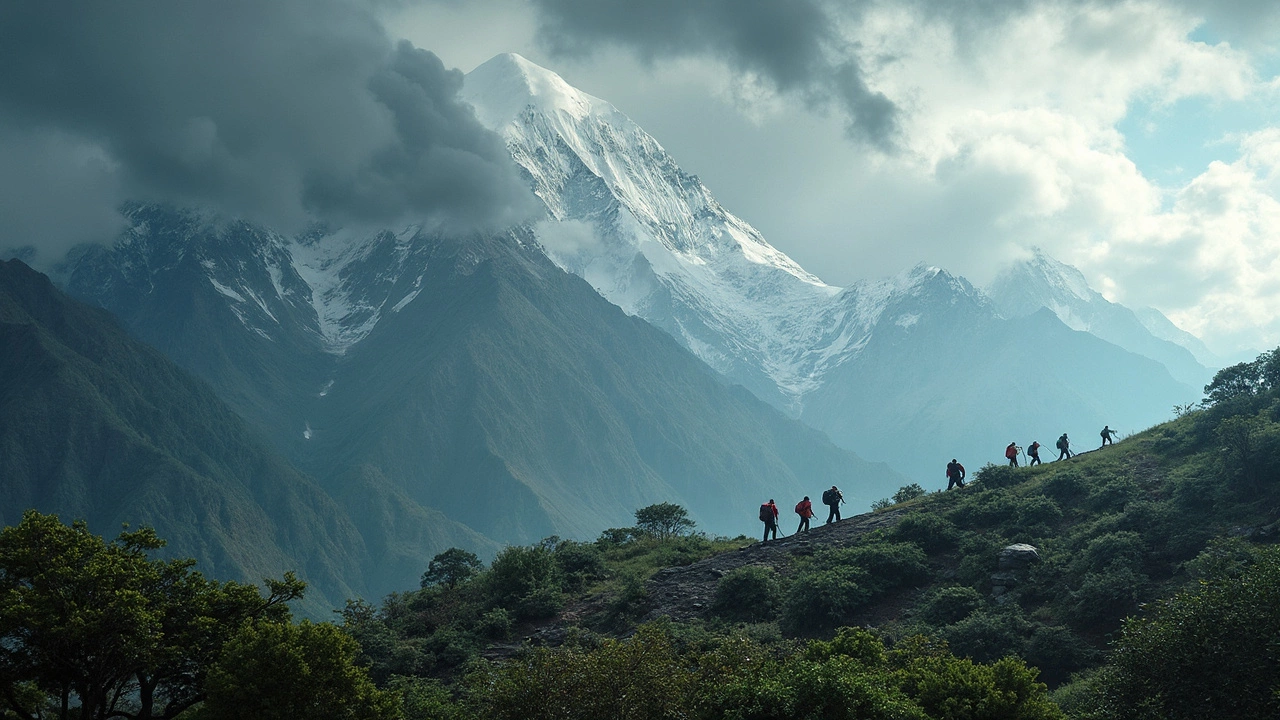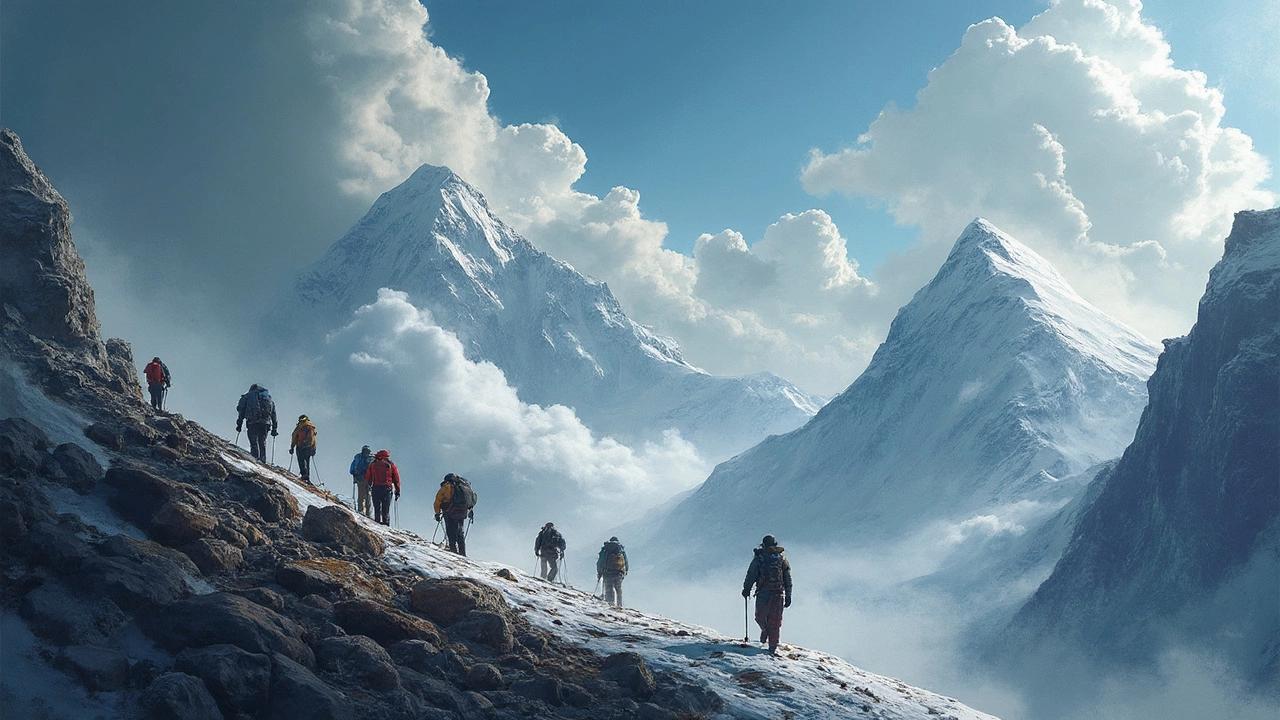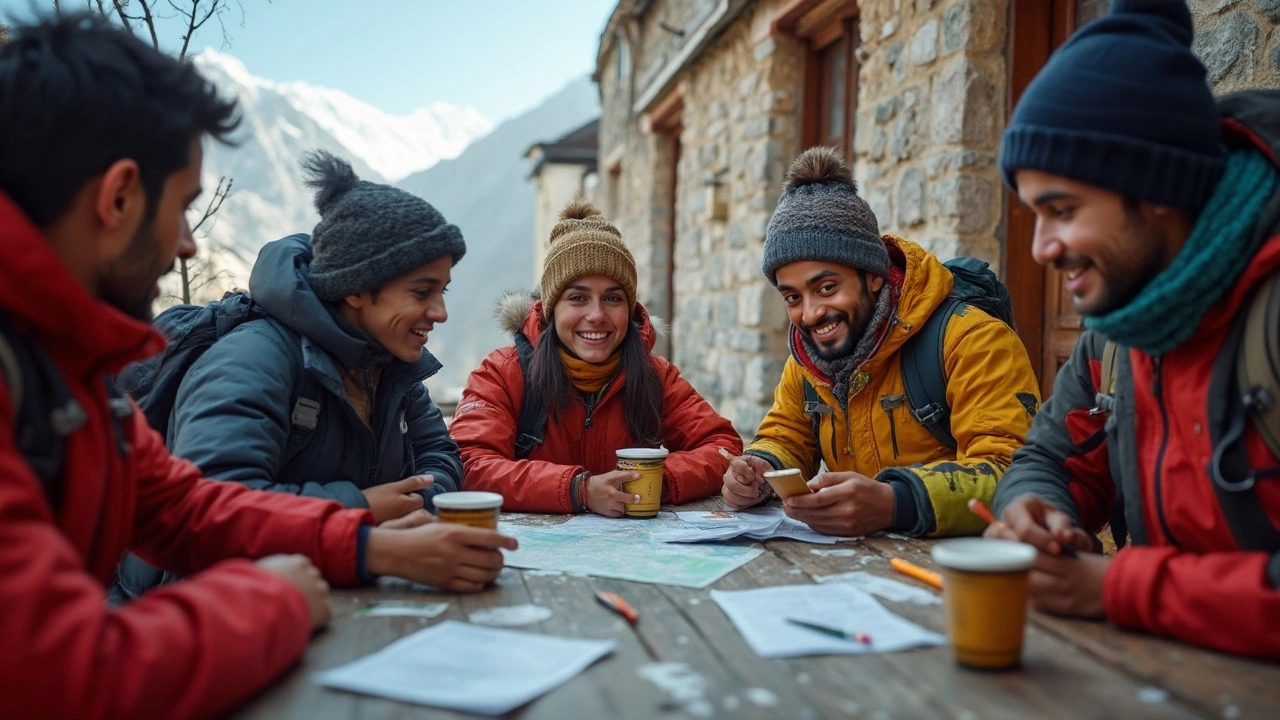Is Kanchenjunga Harder to Climb Than Everest?

Ever wondered if Kanchenjunga might just edge out Everest in terms of sheer difficulty? Well, it's not all about height. Everest might be the tallest kid on the block, but Kanchenjunga has its own bag of tricks that make climbers think twice.
First off, the weather here is like a moody teenager. One minute it's as pleasant as a sunny day at the beach, and the next, you're caught in a snowstorm that could give you frostbite. Always be prepared for rapid weather changes when you're planning to tackle Kanchenjunga.
Then there's its remote nature. Getting to Kanchenjunga isn't exactly like taking a weekend road trip. You've got to navigate some pretty isolated terrain, and that adds to the whole adventurous vibe, but it demands more logistical planning and endurance.
- Climbing Challenges
- Weather Conditions
- Accessibility and Remoteness
- Permits and Regulations
- Essential Tips for Trekkers
Climbing Challenges
When it comes to climbing Kanchenjunga, you need to brace yourself. Unlike Everest, Kanchenjunga isn't swarming with climbers, and there's a reason for that. The challenges here are unique and intimidating.
First up, the routes are less traveled and not as well-established. You'll find fewer fixed ropes, which means you’re more reliant on technical climbing skills and your ability to navigate tricky terrains. Couple this with the mountain’s remoteness, and you’re looking at a trek that's a different beast compared to the bustling paths of Everest.
Another point to consider is the higher chance of avalanches and rockfalls. The mountain's steep sections make it a notorious spot for these natural dangers, so ensuring you have the right gear and an experienced team is essential.
Let’s not forget the altitude. Summit attempts are usually from around 8,000 meters, where oxygen levels plunge, making even the toughest trekkers gasp for air. This means acclimatization is crucial. Climbers often spend weeks getting used to the altitude, progressively climbing higher before making their summit push.
Lastly, you have the weather. Keeping an eye on the forecast becomes second nature. Unexpected storms can roll in quickly, turning a manageable situation into a dangerous one. Kanchenjunga does not tolerate mistakes, demanding attention to detail and respect from everyone aiming to scale its heights.
Weather Conditions
Tackling the peaks of Kanchenjunga means you’re going toe-to-toe with some unpredictable weather. The mountain is notorious for its fast-changing climate, which keeps even the most seasoned trekkers on their toes. We're talking about a place where the sun can be shining down on you one minute, and the next, you're battling through a blizzard.
One key thing to remember is how the weather varies with altitude. As you climb higher, temperatures drop, and winds pick up speed. Unlike Everest, which has more predictable climbing seasons, Kanchenjunga can surprise you with sudden weather shifts. This unpredictability is a big factor when considering if Kanchenjunga trekking is harder than Everest climbing.
It's super important to keep an eye on the weather reports and stay flexible with your plans. This isn't just a suggestion; it can make a huge difference between a successful summit and turning back mid-trek. Aim for pre-monsoon or post-monsoon months to avoid the extreme weather. But hey, always keep a backup plan because, on Kanchenjunga, even the best-laid plans might need tweaking.
If you're keen to make this trek, pack the right gear. Insulated clothing, sturdy boots, and reliable weatherproof outerwear are key. Don't skimp on these. Staying warm and dry can make all the difference.
Here's a quick look at how temperatures and weather conditions swing around Kanchenjunga's trekking routes:
| Month | Temperature Range (°C) | Common Weather Conditions |
|---|---|---|
| April - May | -15 to 10 | Cold, occasional snow |
| June - August | -10 to 15 | Rainy, cloud formations |
| September - November | -20 to 5 | Clearer skies, colder nights |
| December - March | -25 to 0 | Heavy snow and high winds |
Ultimately, trekking Kanchenjunga demands respect for its weather. Always consult up-to-date reports, gear up for a range of conditions, and keep your adventure mindset sharp.

Accessibility and Remoteness
Let's talk about getting to this bad boy—Kanchenjunga. It's not a walk in the park. Unlike Everest, which has several well-trodden paths leading up to base camp thanks to its popularity, Kanchenjunga is really in the middle of nowhere. This makes the journey just to the starting line an adventure in itself.
First, you'll typically start off by flying into Bagdogra airport, which is the closest major airport. From there, you'd make your way to Yuksom or another starting point in Sikkim by road. Trust us, these trips are not for the faint-hearted; bumpy roads and long travel times are part of the deal. We're talking a multi-hour drive through winding and occasionally rough terrain just to reach the jump-off point.
Once you're in Sikkim, remember, Kanchenjunga sits proudly with sections in Nepal, India, and parts of Tibet looking on from afar. The regulations here can be strict. Sikkim, for instance, only issues a limited number of climbing permits each year, and they usually require climbers to be part of an organized expedition. Not to mention, some areas are prohibited for non-Indian trekkers.
Because of Kanchenjunga's less beaten paths, infrastructure is minimal. Expect basic accommodations and local guides who offer their invaluable experience in exchange for access to these hidden trails. You're not going to find cell service or Starbucks here—just pure, unspoiled trekking adventures.
If you're up for a real trek that includes prepping for logistical challenges and cherishing rare insights into local culture, then Kanchenjunga might just be your place. Just remember, getting there and back again is as much a part of the adventure as reaching the peak itself!
Permits and Regulations
Climbing Kanchenjunga is no spontaneous adventure; it's a trip that needs some serious prep, especially when it comes to permits and regulations. The mountain sits in a restricted area, so you'll need a special permit to trek there. The good news is that these permits ensure the environment stays protected, but they do add an extra layer of bureaucracy.
First things first, if you're a foreign national, you've got to apply through a registered local agency, which will guide you through the process. Theses guys are pros; it's kind of like your backstage pass to the Himalayas. The permit itself for Kanchenjunga trekking costs around $500 per person for a month, but prices can vary slightly depending on the season or policy changes.
Another thing to remember is that you'll need to get clearance from the Indian Mountaineering Foundation (IMF). This isn't just paperwork; it's about ensuring all climbers are heading up with safety in mind. The IMF's involvement helps in maintaining strict rules, so everyone gets back down the mountain with all their fingers and toes intact.
Oh, and let’s not forget about the eco-sensitivity of the region. The regulations also enforce that climbers adhere to certain eco-friendly practices – like proper waste management – to protect the majestic yet fragile environment of the world's third highest peak.
If you're putting your name down for Kanchenjunga, start by syncing with a local agency and getting all your paperwork sorted well in advance. And make sure you budget some time for this process, especially since the rules can be updated and you'll want to be on top of any new requirements.

Essential Tips for Trekkers
Trekking to Kanchenjunga isn't your typical walk in the park. To tackle this beast, you need to be smart and well-prepared. Whether you're experienced or new to this scene, a few tips can make a world of difference.
First off, never underestimate the power of preparation. Get your permits sorted well in advance because the rules around Kanchenjunga trekking are strict. And hey, no one's sneaking past these regulations; you need a special permit since it's not just a regular clamber up a hill.
Now, packing smart is your next best friend. Think layers. The weather’s as unpredictable as trying to predict where your cat might decide to nap next. Pack these basics:
- Insulating layers to keep warm
- Waterproof jacket and pants for sudden downpours
- Quality trekking boots
- Health essentials like a proper first-aid kit
Altitude sickness is real. Acclimatization should be on your checklist. Take your time ascending, and don't fuel up on those summit vibes too quickly. A slow and steady approach lets your body get used to the thinner air.
Considering the remoteness and the tricky terrain, having a local guide isn't just handy—it's crucial. These folks know the ins and outs of the terrain like it's their backyard. Not to mention, they'll help you communicate with locals when your language skills fall short.
Last but not least, train hard before you even think about setting foot on the trail. Cardio, strength training, and endurance exercises will transform a daunting trek into a less Herculean task. Make it a point to prepare your body in real-world conditions: light backpacks, long hikes, and stair climbs.
And if you ever doubt whether the planning and effort are worth it, remind yourself of the stunning views and the personal triumph at the end of it. This trek is as much about the journey as it is about the destination.
